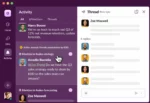
Over the past 25 years, the Java tool landscape has changed quite a bit. As Java is such an integral part of many companies’ development environments, there are a lot of vendors who provide support for Java in the form of tools for working with Java.
For example, over the years a number of companies have been able to claim a hold on the Java IDE market, namely JetBrain’s IntelliJ IDEA, Eclipse, Apache NetBeans, and Visual Studio Code. According to Java Magazine’s Largest Survey Ever of Java Developers in 2018, IntelliJ IDEA is currently the most popular Java IDE with 45% of respondents saying they use either the free or paid version. About 33% of developers use a paid version of IntelliJ IDEA, while about 12% use the free version.
RELATED CONTENT:
Java celebrates 25th anniversary following the release of Java 14
Twenty years of Java through its creator’s eyes
A timeline of Java at 20
Following behind IntelliJ IDEA is the Eclipse IDE, with 38% of Java developers using it. Apache NetBeans sees a much lower proportion of users, at 11%. NetBeans was originally Sun Microsystems’ IDE for Java, but now it is maintained by Apache. Even lower still are vi/vim/emas (3%), Visual Studio Code (1%), and Oracle JDeveloper.
JetBrains’ 2019 State of Developer Ecosystem survey shows even more distance between editors. They showed that 65% used IntelliJ IDEA (which is owned by JetBrains), 17% used Eclipse, 9% used Android Studio, and 4% used NetBeans.
It has also spawned projects like JRebel, which is a JVM plugin that allows developers to update code and then instantly see changes without having to restart the application server, the JRebel team explained.
In addition, Java EE led to popular projects, such as the reference implementations Glassfish, Wildfly, and EAP. According to Mark Little, vice president of engineering in Red Hat’s Middleware division, Jakarta EE no longer has reference implementations, though Glassfish does still remain. “Glassfish remains as *an* implementation but each specification is allowed to progress through the new Jakarta EE process as long as there’s an open source implementation out there. It doesn’t have to be Glassfish based these days,” said Little.






